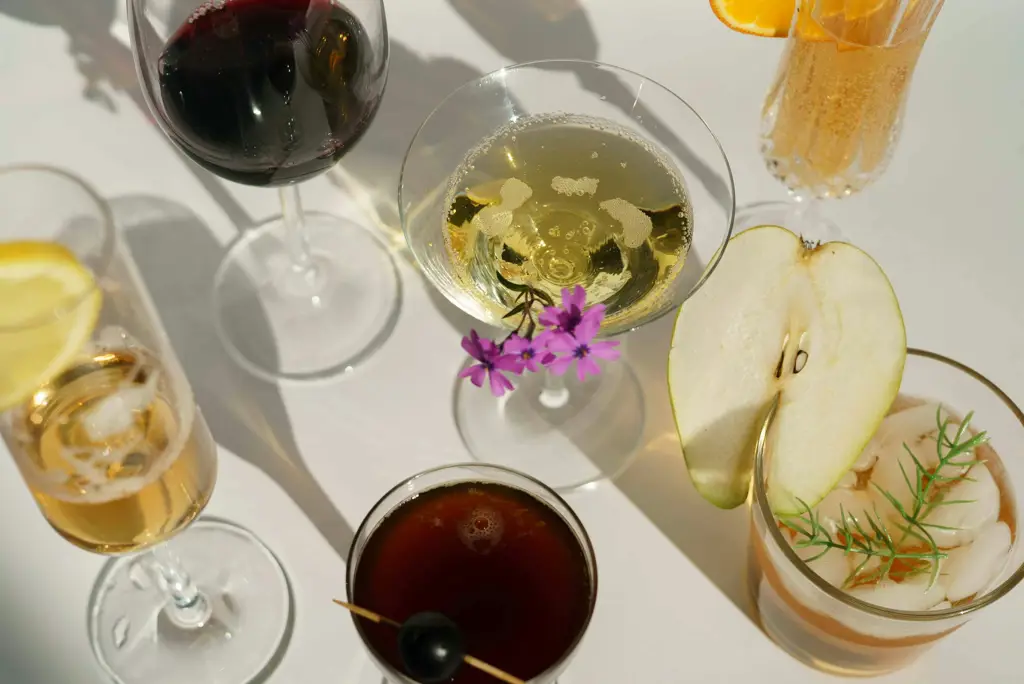Baked salmon with lemon is a seemingly simple dish, yet its origins and cultural significance are surprisingly rich. While pinpointing the exact moment someone first baked salmon with lemon is impossible, the practice reflects a long-standing culinary tradition of combining the richness of salmon with the bright acidity of citrus. Salmon itself has a history as old as human civilization, with archaeological evidence suggesting its consumption dating back thousands of years. Different cultures, from indigenous peoples of the Pacific Northwest to the Vikings, incorporated salmon into their diets, often using simple cooking methods like smoking or roasting, laying the groundwork for modern preparations.
The addition of lemon, a key element in Mediterranean and Middle Eastern cuisines for millennia, likely evolved as trade routes expanded and cultural exchanges flourished. Lemon’s ability to enhance the flavor of fish, while also acting as a natural preservative, made it a popular choice. In fact, the use of citrus fruits with fish is documented in ancient Roman cookbooks. The precise moment lemon became a standard pairing with baked salmon is unknown, but its popularity is undoubtedly linked to the growing global accessibility of both ingredients in the past few centuries. Today, baked salmon with lemon remains a staple in countless homes and restaurants worldwide, a testament to its enduring appeal.
The dish’s popularity is also reflected in its online presence. A quick search reveals thousands of recipes and variations, highlighting its adaptability and enduring appeal. Salmon is a nutritional powerhouse, packed with omega-3 fatty acids, protein, and vitamin D, making it a favored choice for health-conscious individuals. Statistics show that salmon consumption is steadily increasing globally, driven by both its health benefits and its versatility in the kitchen. Furthermore, the simplicity of baking salmon with lemon makes it accessible to home cooks of all skill levels, contributing to its widespread popularity. This recipe, therefore, is not just a culinary delight but a reflection of our ongoing relationship with food, culture, and health.
Ingredients and Measurements
This recipe yields two servings of delicious baked salmon with lemon. Accurate measurements are crucial for achieving the perfect balance of flavors and ensuring even cooking. We’ll be using weight measurements for the salmon fillets, as this is more precise than volume for ensuring consistent results. If you don’t have a kitchen scale, aim for visually similar-sized fillets.
Salmon Fillets: 12 ounces (340 grams) of skin-on or skinless salmon fillets. Choose salmon fillets that are roughly the same thickness for even cooking. Thicker fillets will require a slightly longer baking time. Look for bright pink or red flesh with a fresh, ocean-like smell. Avoid fillets that have a strong fishy odor or appear dull in color.
Lemon: 1 large lemon. You’ll need the juice and zest for this recipe. Ensure the lemon is fresh and fragrant for the best flavor. A small, less juicy lemon may require using a portion of a second lemon for sufficient juice.
Olive Oil: 2 tablespoons (30ml) of high-quality extra virgin olive oil. Using extra virgin olive oil adds a richer flavor to the dish. You can substitute with another neutral-flavored oil if needed, but the flavor profile may be slightly different.
Garlic: 2 cloves of garlic, minced. Freshly minced garlic provides the best flavor. If using pre-minced garlic from a jar, reduce the amount slightly as the flavor can be more concentrated.
Fresh Herbs (Optional): 1 tablespoon of fresh herbs, such as dill, parsley, or thyme, chopped. Fresh herbs significantly elevate the flavor of the salmon. If using dried herbs, use 1 teaspoon and reduce the amount slightly, as dried herbs are more concentrated in flavor.
Salt and Black Pepper: To taste. Season generously with salt and freshly ground black pepper. Don’t be shy with the seasoning; it enhances the flavor of the salmon. Start with about ½ teaspoon of salt per fillet and adjust to your preference.
Optional additions: Consider adding other flavor enhancements such as red pepper flakes for a hint of spice, or a sprinkle of paprika for a smoky flavor. You can also use different types of citrus fruits, such as lime or orange, in place of lemon.
Equipment List
Baking delicious salmon with lemon requires the right tools. This equipment list ensures a smooth and successful cooking process, minimizing cleanup and maximizing flavor.
Baking Dish: You’ll need a baking dish or oven-safe skillet suitable for your salmon fillets. A 9×13 inch baking dish is ideal for multiple servings, but a smaller, individual-sized dish works perfectly for single portions. Choose a dish that’s oven-safe and can withstand high temperatures up to 400°F (200°C). Avoid using non-stick pans that are not explicitly labeled as oven-safe, as they may warp or release harmful chemicals at high temperatures.
Measuring Cups and Spoons: Accurate measurements are crucial for achieving the perfect balance of flavors. A standard set of dry and liquid measuring cups and spoons is necessary. Ensure your measuring tools are clean and properly calibrated for precision. This is especially important for measuring oil and lemon juice.
Mixing Bowls: At least one medium-sized mixing bowl is recommended for preparing the lemon butter sauce. A larger bowl might be useful if you’re preparing multiple servings or adding additional ingredients like herbs. Choose bowls that are easy to clean and durable.
Baking Sheet (Optional): While not strictly necessary if using an oven-safe skillet, a baking sheet can provide extra stability and prevent spills in the oven. If you’re using a shallower baking dish, a baking sheet underneath offers an extra layer of protection.
Knives: You’ll need a sharp knife for preparing the salmon fillets. A fillet knife is ideal for its flexibility and ability to maneuver around the bones. A chef’s knife can also work, but be cautious not to damage the delicate salmon flesh. A smaller paring knife is useful for zesting the lemon.
Wooden Spoon or Spatula: You’ll need a utensil for mixing the lemon butter sauce. A wooden spoon or spatula is recommended as it won’t scratch your mixing bowls. Avoid using metal utensils as they can react with the acidic lemon juice and potentially alter the flavor.
Lemon Zester (Optional): While not essential, a lemon zester allows for easy and efficient removal of lemon zest, enhancing the aroma and flavor of the dish. A microplane zester is particularly effective for fine zesting. You can also use a vegetable peeler carefully, but be mindful of removing only the outer layer of the lemon peel, avoiding the white pith which can be bitter.
Oven Mitts or Gloves: Essential for safely handling hot baking dishes. Always use oven mitts or gloves when removing the salmon from the oven to prevent burns.
Preparation of Salmon
Proper preparation of your salmon fillet is key to achieving perfectly baked, moist, and flavorful results. Begin by selecting a high-quality salmon fillet, ideally skin-on for optimal moisture retention. Aim for a fillet weighing approximately 6-8 ounces per serving. Avoid fillets that are excessively dry or show signs of discoloration. The ideal salmon will have a vibrant, pinkish-orange hue.
Once you’ve selected your salmon, gently rinse it under cold running water. Pat it thoroughly dry with paper towels. Removing excess moisture is crucial to ensure the skin crisps nicely and the salmon cooks evenly. Don’t skip this step!
Now, it’s time to score the skin (optional, but recommended). Using a sharp knife, make several shallow diagonal cuts across the skin, about 1/4 inch apart. This helps the skin crisp up more evenly during baking and prevents it from curling. Be careful not to cut into the flesh of the salmon.
Next, prepare your seasoning. For a simple yet effective preparation, consider using 1 teaspoon of salt, 1/2 teaspoon of black pepper, and the zest of half a lemon. Evenly distribute the seasoning over both sides of the salmon fillet. Don’t be shy with the seasoning; it enhances the flavor of the delicate salmon. You can also add other herbs and spices, such as dill, thyme, or paprika, to suit your taste.
For extra flavor, you can create a simple marinade. Combine 2 tablespoons of olive oil, 1 tablespoon of lemon juice, and your preferred herbs (1 tablespoon chopped fresh dill or parsley works well). Gently brush this mixture over the seasoned salmon fillet, ensuring it’s evenly coated. Allow the salmon to marinate for at least 15 minutes, or up to 30 minutes in the refrigerator for deeper flavor penetration. This step is optional but highly recommended.
Finally, before placing the salmon in the baking dish, consider adding a thin slice of lemon directly onto the fillet. This adds a burst of fresh citrus flavor and enhances the overall taste. Ensure your baking dish is lightly greased with olive oil or cooking spray to prevent sticking.
Lemon and Herb Preparation
Preparing the lemon and herbs is crucial for achieving a vibrant and flavorful baked salmon. Start by selecting fresh, high-quality ingredients. The zest and juice of the lemon provide a bright acidity that cuts through the richness of the salmon, while the herbs add aromatic complexity.
For this recipe, we’ll use one medium-sized lemon (approximately 2 ounces). Begin by thoroughly washing the lemon under cold running water to remove any dirt or pesticides. Always wash your produce before handling.
Next, zest the lemon using a microplane or a fine grater. Aim to obtain about 1 tablespoon of lemon zest. Be careful not to grate too deeply, as this can result in the bitter white pith being included. Set the zest aside in a small bowl.
Now, juice the lemon. You should get approximately 2-3 tablespoons of fresh lemon juice. Use a citrus juicer for the most efficient extraction. If you don’t have one, you can roll the lemon firmly on a countertop before cutting it in half to help release more juice.
For the herbs, we’ll use a classic combination: fresh dill and parsley. Fresh herbs always provide superior flavor compared to dried herbs. Finely chop 2 tablespoons of fresh dill and 1 tablespoon of fresh parsley. This will yield approximately 2 tablespoons of combined chopped herbs. You may substitute other herbs like thyme or chives, depending on your preference. However, avoid using strong-flavored herbs that might overpower the delicate flavor of the salmon.
Once you’ve zested and juiced the lemon and chopped the herbs, gently combine them in the small bowl with the lemon zest. Avoid over-mixing, as this can bruise the herbs and diminish their flavor. This fragrant mixture will be used to season the salmon and create a flavorful sauce during baking.
Pro Tip: For an extra layer of flavor, consider adding a small clove of minced garlic (about 1/2 teaspoon) to the lemon and herb mixture. Remember to taste and adjust seasonings according to your preference.
Baking Process
Preheat your oven to 400°F (200°C). This ensures even cooking and a perfectly flaky salmon fillet. Using a preheated oven is crucial for consistent results.
While the oven preheats, prepare your baking dish. A small, oven-safe dish approximately 8×8 inches is ideal for one or two salmon fillets. Lightly grease the dish with olive oil or cooking spray to prevent sticking. Don’t skip this step; it makes a huge difference in ease of cleanup and prevents your salmon from sticking.
Place your salmon fillet(s) in the prepared baking dish. If using two fillets, ensure they aren’t overcrowded. Leave a little space between them for even heat distribution. For a 6-ounce fillet, you’ll need approximately 1 tablespoon of olive oil. Drizzle the olive oil evenly over the salmon, ensuring both sides are lightly coated. Using too much oil can make the salmon greasy, while too little can lead to dryness.
Now for the lemon! Cut a lemon into thin slices. Arrange 2-3 lemon slices on top of each salmon fillet. You can also squeeze the juice of ½ a lemon over the fillets for extra zesty flavor. Freshly squeezed lemon juice adds brightness and acidity, complementing the richness of the salmon.
Season generously with salt and freshly ground black pepper. About ½ teaspoon of salt and ¼ teaspoon of black pepper per fillet is a good starting point, but adjust to your preference. Don’t be afraid to season generously; the flavors will meld beautifully during baking. You can also add other herbs like dill or thyme for extra aromatic complexity.
Bake for 12-15 minutes, or until the salmon is cooked through and flakes easily with a fork. Cooking time will depend on the thickness of your fillet; thinner fillets will cook faster. The internal temperature of the salmon should reach 145°F (63°C). You can use a meat thermometer to check for doneness accurately.
Once cooked, carefully remove the baking dish from the oven. Let the salmon rest for a couple of minutes before serving. This allows the juices to redistribute, resulting in a more tender and flavorful fish. Resting is an often overlooked but very important step in achieving perfectly cooked salmon. Serve immediately and enjoy your delicious baked salmon with lemon!
Checking for Doneness
Determining the perfect doneness for your baked salmon is crucial to achieving a flaky, moist, and delicious result. Overcooked salmon becomes dry and tough, while undercooked salmon presents a food safety risk. There are several reliable methods to ensure your salmon is cooked through without being overdone.
The Flake Test: This is the most common and reliable method. Gently insert a fork into the thickest part of the salmon fillet. If the flesh flakes easily with minimal resistance, and separates into distinct layers, your salmon is cooked through. Avoid excessive prodding, as this can break the delicate flesh. If the fish feels resistant and doesn’t flake easily, it needs more time in the oven.
The Internal Temperature Test: A food thermometer provides the most accurate measurement of doneness. Insert the thermometer into the thickest part of the fillet, ensuring it doesn’t touch the bone. The salmon is cooked when the internal temperature reaches 145°F (63°C). This method is particularly helpful for thicker fillets or when baking multiple salmon pieces of varying thicknesses. Remember to clean and sanitize your thermometer after each use.
Visual Cues: While not as reliable as the flake or temperature test, visual cues can offer a general indication of doneness. The salmon should appear opaque and no longer translucent or glossy. The color will change from a raw, almost glassy look to an opaque, pearly pink or white, depending on the type of salmon. However, relying solely on visual cues can be misleading, especially for thinner fillets which might appear cooked even if they are not.
Timing as a Guide: Baking time is highly dependent on the thickness of your fillet and your oven’s temperature. A general guideline is to bake a 1-inch thick salmon fillet at 400°F (200°C) for about 12-15 minutes. Thicker fillets (1.5-2 inches) will require 18-22 minutes. However, always prioritize the flake and temperature tests over baking time estimates. Ovens vary in temperature, and even fillets of the same thickness can cook at slightly different rates.
Important Note: It’s better to slightly undercook the salmon than overcook it. The residual heat will continue to cook the fish even after it’s removed from the oven. If you’re unsure, err on the side of caution and check for doneness a minute or two earlier than your estimated time. Always practice safe food handling and ensure the salmon reaches a safe internal temperature.
Recommendations
For optimal flavor and texture, we recommend using fresh, high-quality salmon fillets. Look for fillets that are bright pink and firm to the touch. Avoid fillets with a strong fishy odor or dull coloration.
Serving suggestions are plentiful! This baked salmon with lemon is incredibly versatile. It pairs beautifully with a variety of sides. Consider serving it with roasted asparagus, quinoa, couscous, or a simple green salad for a light and healthy meal. For a heartier option, try serving it with mashed potatoes or roasted vegetables like broccoli or Brussels sprouts.
To enhance the lemon flavor, consider adding a sprinkle of fresh dill or parsley before serving. A drizzle of olive oil or a squeeze of extra lemon juice can also elevate the dish. Experiment with different herbs and spices to find your perfect combination.
Storage: Leftover baked salmon should be stored in an airtight container in the refrigerator for up to 3 days. Reheat gently in the microwave or oven until warmed through. Avoid overcooking, as this can dry out the salmon.
Nutritional Information (per serving, approximate): Calorie count will vary depending on the size of the salmon fillet and the amount of added fat (e.g., olive oil). A typical 4oz serving could contain approximately 200-250 calories, with a good source of protein, omega-3 fatty acids, and vitamin D. The exact nutritional values will depend on the specific ingredients used and portion size. We recommend using a nutrition calculator to determine the precise nutritional content of your recipe.
Complementary Dishes: To create a well-rounded meal, consider pairing your baked salmon with a side of crusty bread to soak up the delicious lemon-infused juices. A light and refreshing white wine, such as Sauvignon Blanc or Pinot Grigio, would also complement the dish beautifully. For a more substantial meal, a simple side salad with a light vinaigrette or a creamy lemon-dill sauce would add extra flavor and texture.
Enjoy! We hope you enjoy this simple yet delicious recipe. Remember to adjust cooking times based on the thickness of your salmon fillets to ensure they are cooked perfectly.





